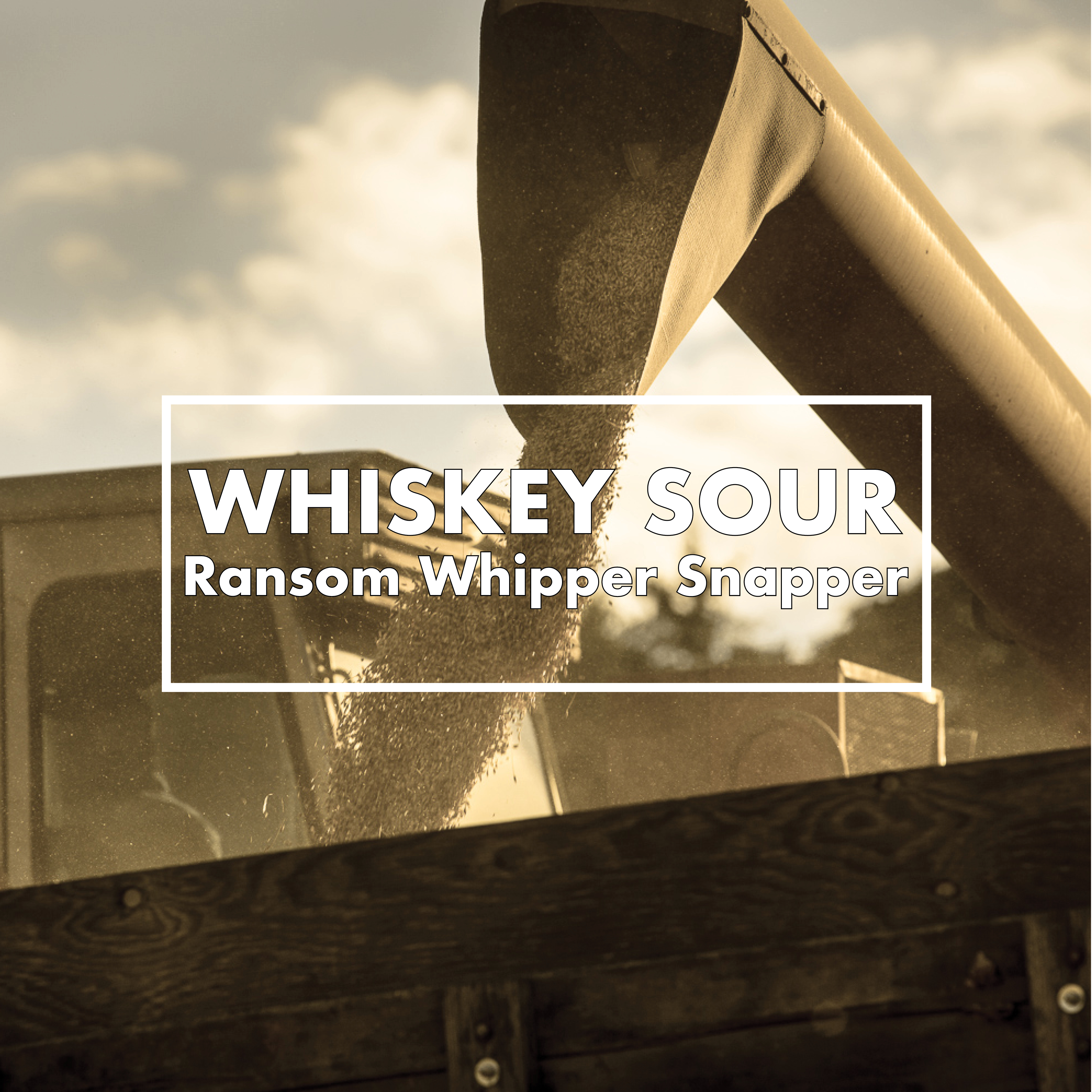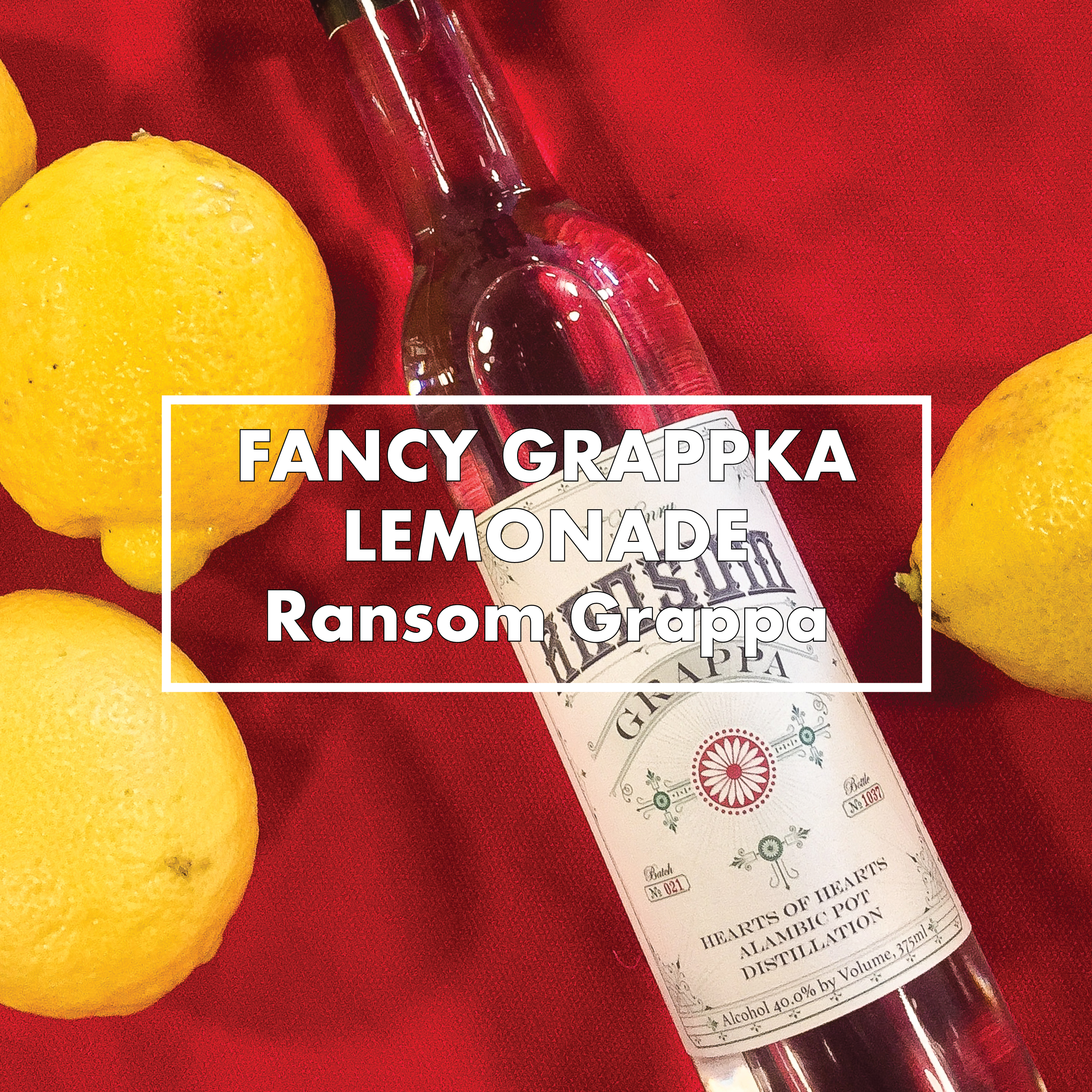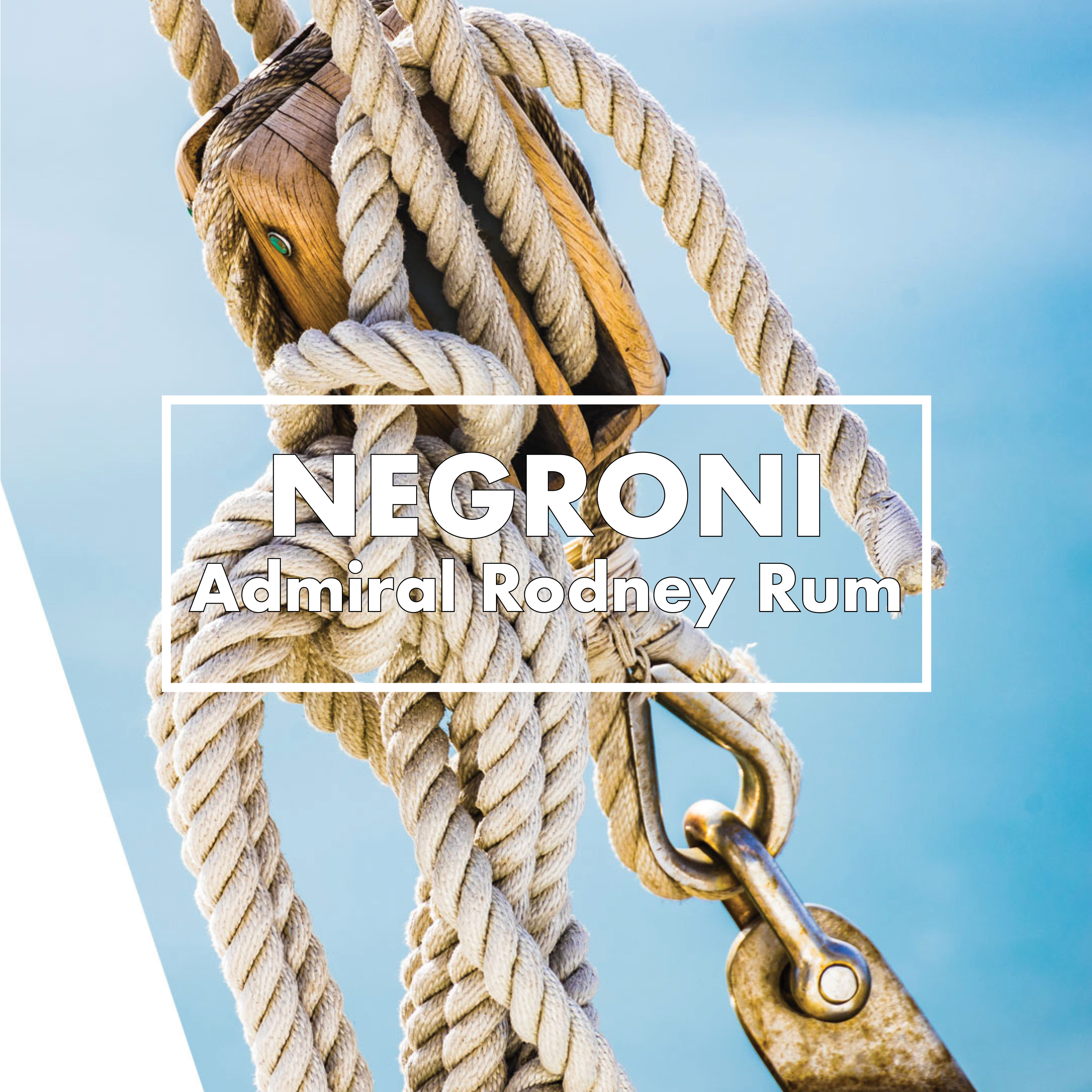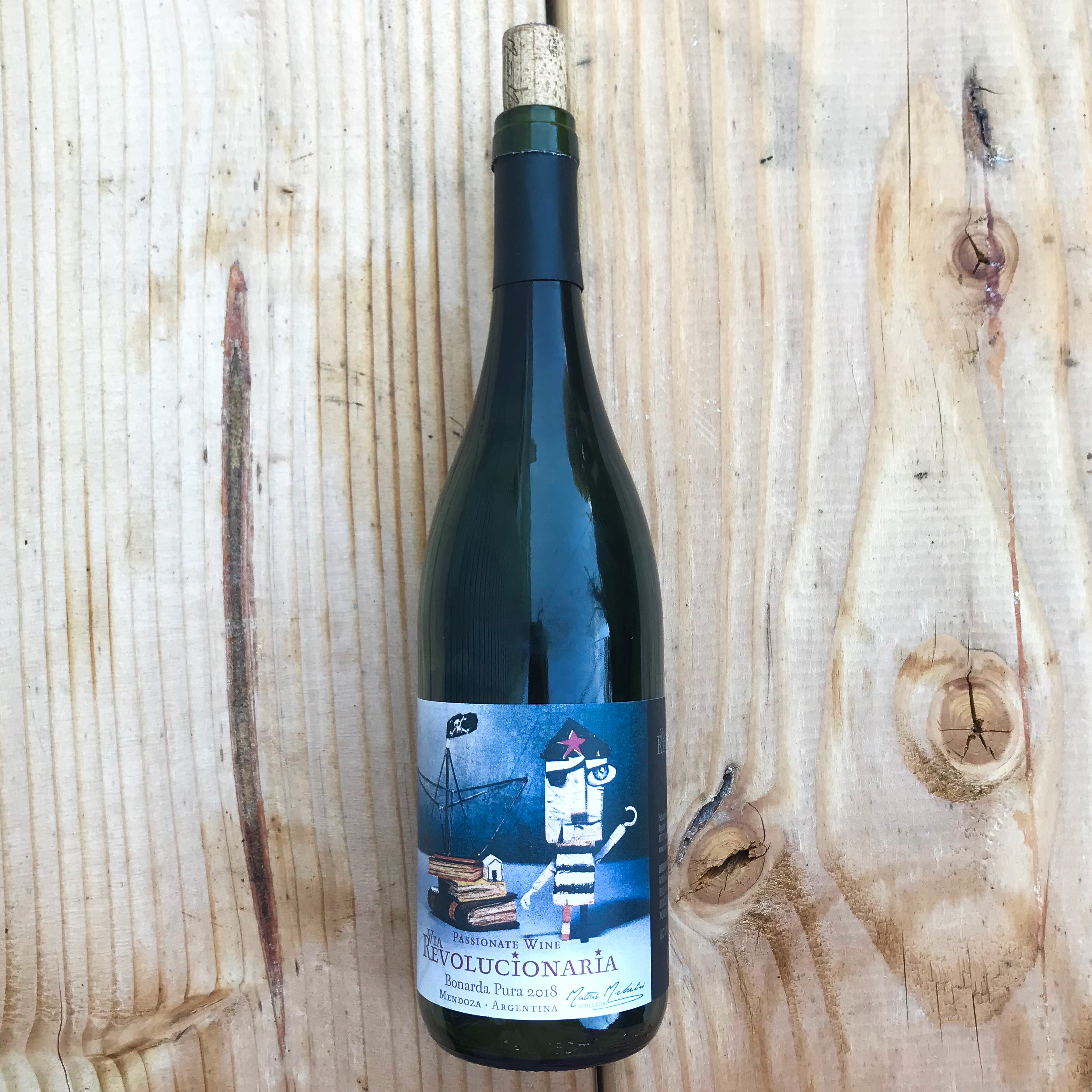| August 2019 | ||
| « Jul 2019 | News | Sep 2019 » |
August 25, 2019
Cream Cocktail: Whiskey Sour

Ransom Wines & Spirits, founded by Tad Seestedt in 1997, is an artisan winery and distillery located in McMinnville, Oregon. Tad named the operation Ransom to represent the debt incurred to start the business; Tad was paying his own ransom to realize his dream.
Initially, the distillery made small amounts of grappa, eau de vie and brandy. The production of small batch, fine wines started in 1999. In 2007, Tad took up the craft of grain-based spirits, adding gin, whiskey and vodka to the lineup. In 2010, Tad combined his crafts of winemaking and distilling to create his first dry vermouth.
Ransom sources local and organic grains for their spirits where possible. Tad mashes and ferments the base wort on site weekly in small batches. The spirits are distilled in a hand-hammered, direct-fired French alembic pot still. Tad makes all of the selective cuts by taste and smell, without the use of computers or robots. This labor intensive, traditional method of distillation retains greater aromatic intensity and body from the raw materials they select with such great care.
The pot distilled, handcrafted Whipper Snapper represents Tad’s endeavor to utilize and combine the best of production methods, and technical approaches to making bourbon, scotch, Irish whiskey, and Dutch corenwyn. The Whipper Snapper cannot be placed in one category of whiskey. It is clearly different from any one single style, with the best of the parts from several distinct styles. Although the mash bill is most similar to bourbon, it is quite heavy on malted barley, and aromatically is more similar to a highland scotch or Irish whiskey. It is intended for sipping, mixing in cocktails, or just plain drinking.
Whiskey Sour
2 oz Ransom Wines & Spirits ‘Whipper Snapper’ Whiskey
3⁄4 oz Lemon Juice
3/4 oz Simple Syrup
one whole Egg White
Add all ingredients to tin without ice, dry shake, add ice, hard shake, strain into coupe or rocks glass
August 20, 2019
Cream Cocktails: Fancy Grappka Lemonade

Turning lemons into lemonade the Italian way, by distilling grape pomace into an even boozier digestif. When it comes to alcohol, Grappa is just about as zero waste as you can get. During the winemaking process, grape juice is pressed out and fermented, leaving behind skins, pulp, seeds and stems. While many consider this pomace to be waste, legend has it that a particularly thrifty Roman soldier discovered that these leftover grape remnants were in fact packed with flavor and aromatics, and could be boiled, distilled and extracted for alcohol.
This recycled grape must elixir is now a protected name under European law, and is widely produced and consumed across Italy. Typically ranging from 35-60% ABV, the potent and boozy Grappa is frequently served as a digestif or mixed straight into coffee, called a caffè corretto or “corrected coffee.” Although it got a bad rep in the past as Italy’s moonshine, in recent years, Grappa has become more popular in American bars and restaurants, where it has been recognized for it’s great potential in cocktails.
Grappa is coming up on it’s moment here in the states, and Ransom Wines & Spirits has some of the best home grown stuff you can find. Ransom’s Tad Seestedt released his first Grappa in 1997, and has been making it in limited production ever since. Based in the Willamette Valley, Ransom’s Grappa is carefully crafted to an unparalleled standard of quality. Aromatic white varieties are harvested at optimum ripeness and lightly pressed. The free-run juice becomes wine while the pomace, which still holds a high percentage of juice, is used for the grappa. The pomace is covered with water, lightly pressed and distilled in alambic copper stills. The resulting Grappa is an elegant, effusive expression of both the varietal character of the grapes and the time-honored traditions of fermentation and alembic distillation. An ethereal, inviting nose showcases elderflower, heirloom pear, and tea rose. Hints of stone fruit and cassia show on a long, elegant finish. Drink neat, pour into your coffee, or add to your bar as your new favorite mixer.
Fancy Grappka Lemonade
Ingredients
1oz Valentine Vodka
1oz Ransom Wines & Spirits Grappa
.75oz Lemon Oleo Sacchrum
Check out Difford’s Guide for the ultimate Lemon Oleo recipe
.25 Lemon Juice
Directions
Shake, strain over Ice in Collins glass.
August 16, 2019
National Rum Day: Negroni x Admiral Rodney

The not-so-secret ingredient in your favorite tiki cocktails, rum is made from sugarcane juice, cane syrup or molasses that has been fermented, distilled, and frequently aged in oak barrels. While today it is produced around the world, the heart of rum’s production is found in the Caribbean, where it was first distilled from the sugar canes planted by European colonizers. Distinct styles evolved from the islands different production methods, which can be generally grouped into British, Spanish and French-style rum.
Rum has been intertwined with the Caribbean’s culture and heritage for nearly 400 years. The Authentic Caribbean Rum (ACR) Marque was developed to celebrate this history, and act as a symbol of authenticity, provenance and quality for rums within the West Indies Rum and Spirts Producers’ Association Inc. (WIRSPA) family. This marque on the bottle indicates the rum was distilled in one of 30 Caribbean distilleries that have guaranteed the origin and provenance of their rum. No additives are permitted to ACR rums, and the age indicated on the bottle must be the youngest of the blend in the bottle. As usage of the marque grows it will act as a visual symbol to help trade customers and consumers identify ACR brands as a distinct sector within the drinks industry.
Chairman’s Reserve Rum was the first rum in the US to bear the ACR marquee. Chairman’s rums are produced by St. Lucia Distillers, the only distillery on the island of St. Lucia, and the home base for Bounty and Admiral Rodney rums. St. Lucia Distillers has four different stills, which gives them the ability to make different rums with varying flavor profiles. These British-style rums capture the island’s dynamic and festive qualities, which stem from the island’s traditional and cultural roots.
The Admiral Rodney series of rare and matured rums are handcrafted using traditional methods with an unbreakable commitment to quality. All Admiral Rodney rums are distilled using the distillery’s 45-plate Coffey still, which was commissioned in 1984. Admiral Rodney rums are extracted from the bottom plates of the Coffey still as these distillates have the balance of flavors which enable a long maturation period to provide intensity and complexity. All of the rums are aged in old bourbon barrels.
Negroni x Admiral Rodney
Ingredients
1.5oz Admiral Rodney Princessa
.75oz Bordiga Aperitivo
.75oz Ransom Sweet Vermouth
Directions
Stir, strain into coupe or over a large rock (which ever you prefer) express and garnish with an orange peel.
August 10, 2019
Taking it Slow with Slacker
 One of the most revered producers in Paso Robles, Matt Trevisan’s conceptual and artisan wines have made him a pioneer in California’s small production wine movement. Born in South California, Matt moved to San Luis Obispo in 1990 to study biochemistry at Cal Poly University. It was during this period that he began apprenticing at local wineries, sparking his passion in winemaking and (unknowingly) launching a career in the field.
One of the most revered producers in Paso Robles, Matt Trevisan’s conceptual and artisan wines have made him a pioneer in California’s small production wine movement. Born in South California, Matt moved to San Luis Obispo in 1990 to study biochemistry at Cal Poly University. It was during this period that he began apprenticing at local wineries, sparking his passion in winemaking and (unknowingly) launching a career in the field.
Matt started Linne Calodo in 1998 as a side project while driving forklifts at Wild Horse Winery, with the intention of producing small batch, low intervention wines that showed the very best of West Paso terroir.
And that he did - always fine-tuning, Matt has become known for his impressive, fresh blends of Central Coast grown Syrah, Mourvèdre, Grenache and Zinfandel (among others). Polyculture is thriving. Vineyards are farmed sustainably, and vines are surrounded by oak trees, olives and fruit trees. In the cellar, there’s no formula; Matt makes wine by the taste and feel, crushing fruit straight into the barrel.
Linne Calodo’s minimalist wines have gained a cult following among passionate consumers and sophisticated somms alike, and Slacker, Matt’s second label, has all there is to love at a more accessible price point. Swimming with the big boys but having more fun doing it, Slacker wines don’t worry about expectations, reviews, and scores. Grapes are manually harvested, sorted by hand and ferment with native yeast. These fun blends showcase Matt’s ability to constantly keep creating and pioneering the exciting possibilities of the Paso Robles wine regions.
Slacker Wines 2017 ‘Pink’ Rose of Grenache, Paso Robles
Dry, refreshing and fuller bodied, the Pink has become a staple in the Cream fridge. 100% saignée Grenache, the Pink get it’s rose-hued color from 1-3 hours of skin contact. This is a complex rosé, with notes of dried strawberries, citrus and white flowers. With more depth and flesh, the balanced Pink is a total food wine and perfect for fall in Chicago.
Slacker Wines 2016 ‘Stereotype’ Paso Robles
A Paso Robles Rhône-style wine, the Stereotype is a blend of Grenache, Syrah, and Mourvèdre. Notes of raspberry, plum and bramble fruit are balanced with light, smooth tannins. Grenache lends some spice to this medium-bodied red, with hints of cinnamon and anise. The Stereotype is an easy-drinker with depth. Light, bright and full of flavor, this is a quintessential BBQ wine, or Sunday football wine complete with the lazy day morning-after label to boot.
Slacker Wines 2016 ‘Wanna Be’ Paso Robles
Don’t worry about dessert - the Wanna Be is a savory glass of blackberry pie. Jammy, full bodied and super smooth, this is Zin for your friend who doesn’t like Zin. This is another well balanced, fresh and fruit forward red from Slacker, with a bit of spice and sweet, smoky tobacco. The Zin-Syrah-Mourvedre blend make for a rich, red fruit driven wine with depth. This is the perfect wine for pizza nights, pot lucks and curry-spiced dishes.
About the Labels: Matt’s wines are a balance between art and science, and Slacker’s cinematic, alternative labels fit the bill. The labels are part of a long overdue collaboration with Director and Photographer Philip Andelman, who helped out with a Calodo harvest in 2005 and continues to be a friend of the winery. Philip started his career working for photographer Annie Leibovitz, and later began directing music videos and commercials for a wide range of artists and clients such as Beyonce, Taylor Swift, Nora Jones, Nike and NFL. Alongside film work, Philip recently returned to photography, working closely in the past few years with a select handful of musicians, casually following them on and off the road. From Jack White to Ryan Adams, the Beastie Boys and Beck. Philips work has evolved out of his love of music and travel, his series of photographs resembling scrapbooks chronicling his life.
August 07, 2019
FEATURED: New Producer Alert! The Farm of Seven Moons
Founded in 1984, third generation Jean Delobre is the current proprietor and vigneron of his family farm La Ferme des Sept Lunes (The Farm of Seven Moons), in the hilltop village of Bogy, between Vienne and Valence. La Ferme des Sept Lunes wines have incredible energy, freshness, and depth of flavor that have earned the farm a cult following.
August 06, 2019
Move over Malbec, it's Bonarda's time to shine
 Bonarda is one of those wines that needs an intro - but we promise it’s worth the read. Bonarda, also known as Charbono, is a rare French variety that made its way across the pond with early European immigrants. Originally from Savoie, where it is called Douce Noir, new world Bonarda plantings in Argentina and California have historically been confused for the Italian variety, Bonarda Piemontese. Whatever you call it, these wines are loved for their juicy acidity, medium body and complex, fruity palate. Plantings of the true Douce Noir are limited - California’s Charbono plantings cover less than 100 acres of land. Limited Charbono supply has been brought back into the domestic market by passionate winemakers like Robert Foley, who’s winemaking career started with his first taste of Inglenook Winery’s 1969 Charbono straight from the cask.
Bonarda is one of those wines that needs an intro - but we promise it’s worth the read. Bonarda, also known as Charbono, is a rare French variety that made its way across the pond with early European immigrants. Originally from Savoie, where it is called Douce Noir, new world Bonarda plantings in Argentina and California have historically been confused for the Italian variety, Bonarda Piemontese. Whatever you call it, these wines are loved for their juicy acidity, medium body and complex, fruity palate. Plantings of the true Douce Noir are limited - California’s Charbono plantings cover less than 100 acres of land. Limited Charbono supply has been brought back into the domestic market by passionate winemakers like Robert Foley, who’s winemaking career started with his first taste of Inglenook Winery’s 1969 Charbono straight from the cask.
Looking to get your hands on some of this sought after juice? While plantings are rare in California, Bonarda production trails right behind Malbec in Argentina. Bonarda was first introduced to Argentina at the end of the 19th century by European immigrants. At first thought to be the Italian variety, Bonarda Piemontese, it was not until 2009 that genetic testing proved that Argentina’s vines were in fact Douce Noir. While grown successfully in all parts of Argentina, the thin skinned and late ripening Bonarda thrives in Mendoza and San Juan’s warm, dry climate, where cool nights facilitate juicy acidity. Argentina’s Bonarda wines can be further recognized for their low tannins, low alcohol, and complex aromatics and palate, with notes of black cherry, plum, and allspice. This balancing act makes for ample food pairings; Bonarda’s medium body, lower tannins and high acidity make it a great match for spicy foods, pork and fish.
Bonarda is Malbec’s cool cousin that we definitely want to invite to the party, and we hope Matias Michelini comes too. Matias is the winemaker and agronomist of Via Revolucionaria, located in Tupungato, Uco Valley in the Mendoza. Matias strives to make experimental wines that express terroir. These wines are extremely low production and are drawn from multiple inspirations, regions, and styles. The wines are all sourced from a single vineyard and fermented with native yeast.
Via Revolucionaria 2018 ‘Pura’ Bonarda, Mendoza
The Bonarda grapes are sourced from the Manuel Pelegrina Vineyard in Tupungato, planted in 1972. This 100% carbonic macerated Bonarda was harvested by hand over four separate passages, and fermented with indigenous yeast. Ringing in at 12% ABV, Pura is an easy drinker with finesse. This wine has great tension and bright acidity, balanced by a soft and round midpalate. Acid jumps out at you from the glass, with notes of tart cherry and mixed berry jam.
August 01, 2019
When She Asks for Sauv Blanc
 Hailing from the Iberian Peninsula’s maritime coast, Albariño (alba-reen-yo) is the flagship wine of Galicia and the frequent guest star in Portugal’s fizzy and chuggable Vinho Verde. The heart of Spain’s Albariño production is found in Rías Biaxas, a wine region spanning the northwest coastline. These green-skinned grapes make for highly approachable wines with serious finesse. Albarino’s tend to be dry and racy with a bit of salinity, distinguished further by notes of citrus, stone fruit, and floral aromatics.
Hailing from the Iberian Peninsula’s maritime coast, Albariño (alba-reen-yo) is the flagship wine of Galicia and the frequent guest star in Portugal’s fizzy and chuggable Vinho Verde. The heart of Spain’s Albariño production is found in Rías Biaxas, a wine region spanning the northwest coastline. These green-skinned grapes make for highly approachable wines with serious finesse. Albarino’s tend to be dry and racy with a bit of salinity, distinguished further by notes of citrus, stone fruit, and floral aromatics.
Fresh, crisp, and refreshing (think Sauv Blanc’s fun cousin), Albariño’s are made to be drunk like a Rías Biaxas local, with as much sunshine and seafood as you can come by. Light-bodied and acidic, Albariño’s can also take their fair share of of heat; they make a great pair to Thai curries and spicy fish stews. And don’t let these bottles collect any dust as Albariño is best enjoyed young, typically within 2 years after harvest.
The cat’s out of the bag… Albariño rocks! It’s popularity has soared over the past few decades, making it’s way onto wine lists everywhere. In Rías Biaxas, the number of vineyards have grown from 33 at it’s DO inception in 1988, to hundreds today. Albariño production has also found it’s way to the West Coast, popping up in both California and the Pacific Northwest. These stateside Albariño’s tend to be a bit riper than Galician grapes, while still showing notes of minerality and citrus aromatics.
There’s certainly a lot to love about Albariño, and lucky for us, we have enough of it to last the summer. Check out some of our favorites below.
Bodegas Zarate 2018 Albarino, Rías Biaxas DO
Fresh, fruity and balanced, with persisting minerality that upholds the integrity of Bodega Zarate’s mineral-rich, yellow granite soil. This is a fantastic Albariño. A fresh sea salt nose blends with citrus and a hint of anise spice.
Pazo Do Mar 2018 ‘Castelo do Mar’ Albarino, Rías Biaxas DO
A single vineyard estate Albariño to write home about. ‘Castelo do Mar’ opens with notes of honeysuckle, lemons and peaches. Aromatic and just dry enough, with a super concentrated finish. This Albariño is screaming for some ceviche, but will also pair great with grilled chicken, flaky white fish and spicy curries.
Ransom 2017 Albarino, Willamette Valley
Jump stateside for this Oregon Albariño. Ransom’s 2017 Albariño opens with fresh and vibrant aromatics of Meyer lemon and wildflower honey. On the palate, acid-driven flavors of lemon pastille and Asian pear complement layers of minerality and sur lie creaminess. The wine finishes with nerve and great energy.
Bodegas Albamar 2018 ‘Albamar’ Albarino, Rías Biaxas DO
Push me right into this minerally glass full of honey, citrus and stone fruit. Albamar’s 2018 vintage opens with killer aromatics reminiscent of a grilled prawn paella and sunshine filled Rías Biaxas vacation we haven’t taken yet. Peaches and pear, orange zest and beeswax.
